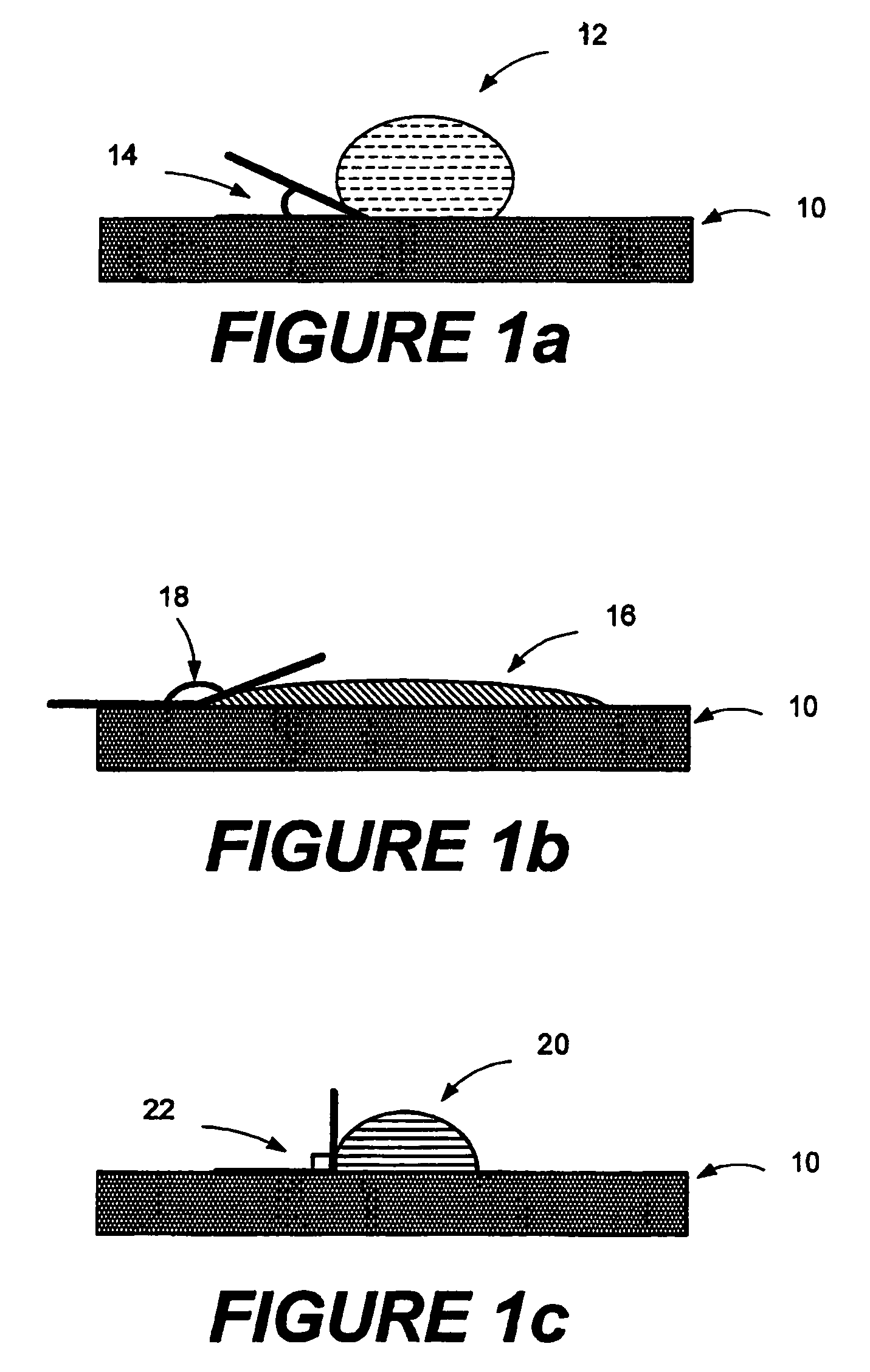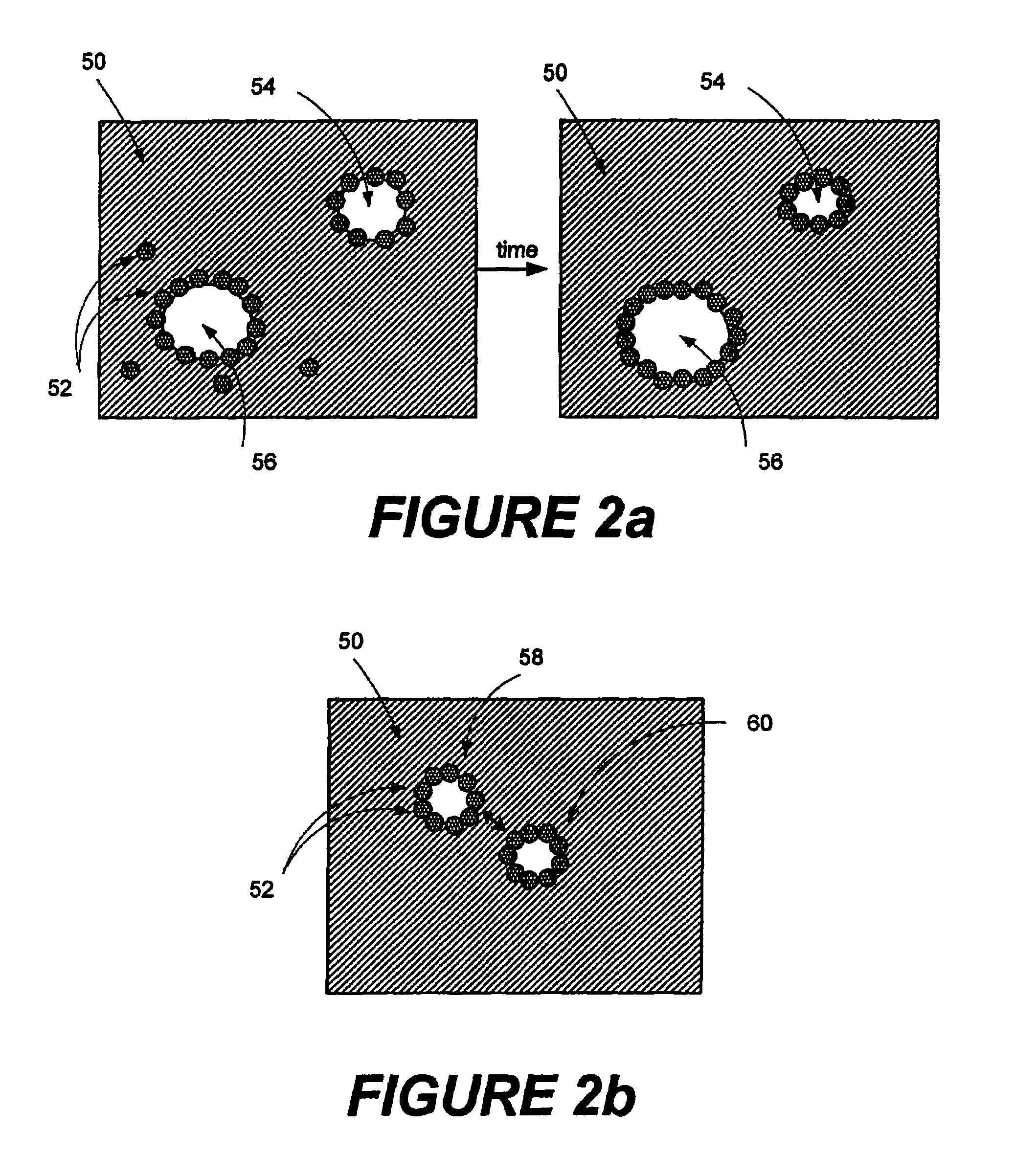Surfactant-free emulsions and methods of use thereof
a technology of emulsion and surfactant, applied in the direction of fluid removal, chemistry apparatus and processes, borehole/well accessories, etc., can solve the problems of reducing surface tension, affecting the stability of emulsion, and not having consistent, reliable properties
- Summary
- Abstract
- Description
- Claims
- Application Information
AI Technical Summary
Problems solved by technology
Method used
Image
Examples
example 1
[0045]Hydrophobically modified silica was obtained from Wacker—Chemie GmbH. Three samples were sent with varying degrees of hydrophobicity generated by reaction of the silica with a methyl silating agent. The three samples obtained in order of increasing hydrophobicity were H20, H30, and H2000. Iron sulfate, obtained from Sigma-Aldrich, was also tested.
[0046]The modified fumed silica materials from Wacker-Chemie GmbH were tested first. Both the H20 and H30 particles readily formed water-in-oil emulsions when 1:1 mixtures of a base oil and fresh water were mixed with 2% by weight of emulsion facilitating particles. The base oils used were SF BASE, ACCOLADE™, and PETROFREE® LV from Halliburton Energy Services, Inc. In general, the H2000 particles failed to produce an emulsion that was stable for more than a few hours, possibly due to the affinity of the H2000 particles for the base oils. However, stable emulsions could be prepared from both H20 and H30 using either SF BASE, ACCOLADE™,...
example 2
[0051]Four drilling fluids (one 9 ppg sample, two 12 ppg samples, and one 16 ppg sample) were prepared using the Wacker-Chemie GmbH solid particles as emulsion facilitating particles. The fluids were subjected to various tests including standard 150° F. 16 hour hot rolling, an additional 250° F. 16 hour hot rolling, and 250° F. high temperature, high pressure (HTHP) readings. The 9 ppg sample was prepared completely surfactant free. The 12 ppg and 16 ppg samples required a small amount of surfactant wetter in order to make the barite and drill solids more hydrophobic in nature. The formulations and properties of these fluids appear below in Tables 3-8. ADAPTA™ HP and DEEP-TREAT™ are both cornmercially available from Halliburton Energy Services, Inc.
[0052]
TABLE 3Mud formulationsSample9 ppg16 ppgACCOLADE ™, g187135H20 emulsifier particles, g22.5Water, ml9771.5CaCl2, g33.824.8ADAPTA ™ HP, g24Barite, g57.8436DEEP-TREAT ™, g00.75
[0053]
TABLE 4Mud properties9 ppg,7:3 Oil:Water16 ppg, 7:3 O...
example 3
[0058]Four fluids were prepared and were aged under elevated temperatures. The formulations and results of this testing appear in Tables 9 and 10. Samples 1 and 2 were prepared without a surfactant and rolled at 200° F. for 16 hours. Sample 2 had too much barite to remain completely oil wet under these conditions and eventually turned to a partially water wet stage and no reasonable rheology readings could be taken. Samples 3 and 4 were rolled at 250° F. for 16 hours. Sample 3 is surfactant-free, and sample 4 contains a very small amount of wetting agent for the barite.
[0059]
TABLE 9High temperature rolling experimentsSample 1Sample 2Sample 3Sample 4ACCOLADE ™, g160.8165186165Water, ml13086.397.486.3CaCl2, g4529.933.829.9ADAPTA ™ HP, g2.02.52.52.5H20 Emulsifier, g2.02.5H30 Emulsifier, g2.52.5DEEP-TREAT ™, g0000.7Barite, g5420054220Fluid weight, lb / gal9.412912Oil water ratio6:47:37:37:3Rolling Time, hours16161616Rolling Temp, ° F.200200250250
[0060]
TABLE 10Rheology DataSample 1Sample 2...
PUM
| Property | Measurement | Unit |
|---|---|---|
| contact angle | aaaaa | aaaaa |
| contact angle | aaaaa | aaaaa |
| contact angle | aaaaa | aaaaa |
Abstract
Description
Claims
Application Information
 Login to View More
Login to View More - R&D
- Intellectual Property
- Life Sciences
- Materials
- Tech Scout
- Unparalleled Data Quality
- Higher Quality Content
- 60% Fewer Hallucinations
Browse by: Latest US Patents, China's latest patents, Technical Efficacy Thesaurus, Application Domain, Technology Topic, Popular Technical Reports.
© 2025 PatSnap. All rights reserved.Legal|Privacy policy|Modern Slavery Act Transparency Statement|Sitemap|About US| Contact US: help@patsnap.com



